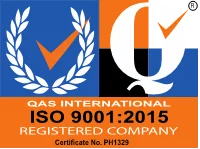We often don’t think about it, but the type of paint used for road markings plays a huge role in keeping our roads safe and durable. Here in the Philippines, with our ever-increasing traffic, challenging weather conditions, and strict regulations, choosing the right road marking material is more than just following the rules. It’s about ensuring people’s safety, saving money in the long run, and protecting the government’s investment in our infrastructure.
Thermoplastic road marking in the Philippines has become the gold standard for heavy-duty road line marking, especially for high-volume urban roads and national highways. But what exactly makes it a superior choice?
Let’s explore why thermoplastic paint used in road marking is a worthwhile investment in government infrastructure projects.
Understanding Thermoplastic Paint: A High-Performance Material
Thermoplastic paint is a type of coating or paint for road marking composed of pigments and binders. It is a hot-applied material consisting of synthetic resin, glass beads, pigments, and filler materials. Unlike ordinary paint, thermoplastic transforms into a molten liquid when heated. This allows it to physically bond with the pavement, forming a thick, tough layer that quickly hardens as it cools. Because it’s engineered to withstand heavy traffic and harsh weather, thermoplastic paint is ideal for road markings that require high visibility and durability.
Here are the unique features of thermoplastic paint:
Durability
Durability is one of the biggest differentiators between standard traffic paint and thermoplastic. Thermoplastic paint typically lasts 3-5 years on road surfaces, but its lifespan can be affected by various factors, including traffic volume, weather conditions, and the quality of both the road surface and the application.

Reflectivity
One of the key safety features of thermoplastic paint is its retroreflectivity—the ability to bounce headlights back to the driver. This is made possible by the high content of intermix and drop-on glass beads embedded in the paint.
Quick Application
Over 400,000 vehicles are traversing EDSA daily, but its carrying capacity is only for 300,000 cars. Closing one lane for road construction can lead to bottlenecks, traffic jams, and increased travel times, not just in EDSA but in any busy road in Metro Manila. Thermoplastic paint is easy to apply and hardens quickly, reducing lane closure times.
Why Thermoplastic Paint is a Standout Material for Road Markings
So, why is thermoplastic road paint the best material to use for government infrastructure projects? Here are the benefits of thermoplastic road applications:
1. Reduced Maintenance Cycles
Since thermoplastic is considered a heavy-duty road line marking paint, it significantly reduces the need for frequent repainting. Once applied correctly, it forms a tough, thick layer that bonds with the road surface, resisting wear from traffic and weather for several years. This durability translates to fewer maintenance cycles, reducing labor costs, minimizing the use of marking equipment, and preventing the need for repeat mobilization of traffic management teams.
For government units and contractors, these operational savings quickly add up, freeing up resources for other critical infrastructure work.
2. Greater Road Safety
Faded or barely visible road markings can compromise driver judgment, especially at night or during inclement weather. Thermoplastic markings retain their brightness and reflectivity much longer than ordinary paint, making them more reliable for road users. Clear and visible lines guide vehicles safely along lanes, at intersections, and near pedestrian zones, helping to prevent swerves, lane drifting, or sudden stops. This consistency is critical on national roads and urban highways, where high-speed and high-volume traffic demand dependable visual cues.
By maintaining clear markings over time, thermoplastic paints directly support safer travel conditions for motorists, pedestrians, and cyclists alike.

3. Lower Lifecycle Cost
While thermoplastic road markings may require a higher initial investment compared to traditional water-based or solvent paints, their extended lifespan offers greater financial efficiency. Because they last three to five times longer, the cost per kilometer per year is significantly reduced. Factoring in savings on labor, traffic management, equipment use, and road closures, thermoplastic traffic paint quickly proves to be more economical.
This makes thermoplastic a strategic choice for long-term infrastructure planning, especially for government projects looking to optimize every peso spent.
4. Enhanced Driver Reaction Time
Thermoplastic road markings provide clear and unmistakable lane boundaries, directional arrows, and warning symbols—helping drivers make quick, accurate decisions. In high-speed environments like expressways or major intersections, split-second choices matter. Clear markings reduce hesitation, lane straddling, or abrupt braking, all of which can cause accidents. Thermoplastic’s brightness and reflectivity ensure that these visual cues remain visible for longer periods, aiding drivers in reacting appropriately and on time.
5. Regulatory Compliance
In the Philippines, the Department of Public Works and Highways (DPWH) enforces strict standards for road markings, including requirements for retroreflectivity, color, width, and durability. Thermoplastic paints are specifically engineered to meet or exceed these specifications. Using substandard paint can lead to failed audits, project delays, and costly rework—all of which burden contractors and government agencies. Thermoplastic’s long-lasting visibility ensures ongoing compliance throughout a project’s lifecycle, reducing the need for emergency repainting or regulatory intervention. Thermoplastic proves to be a reliable choice that delivers peace of mind.
6. Environmental Impact
Frequent repainting with traditional traffic paint contributes to material waste, air emissions, and carbon footprint, especially when solvents, fuel, and rework are factored in. Thermoplastic markings reduce environmental impact by lasting significantly longer, resulting in fewer paint batches, lower energy consumption in production, and reduced emissions from equipment and transportation. Because they reduce the need for frequent road closures, they also help limit traffic congestion, idling, and associated air pollution.

Smarter Paint for Smarter Roads
Road markings are more than regulatory requirements—they’re foundational safety features. And in high-stakes government infrastructure, every peso, every product, and every decision carries weight. Thermoplastic paint is a strategic investment as it consistently delivers superior outcomes.
Suppose you’re looking to reduce maintenance costs without compromising road safety and compliance. In that case, Rua Seguridad offers premium-grade customized road marking paint solutions that are engineered to perform and priced to compete.
Contact us today to learn more about how we can help make your next project a success. Let’s build safer, smarter roads together.



